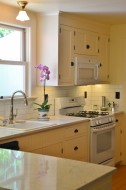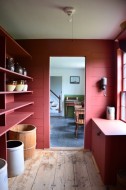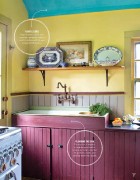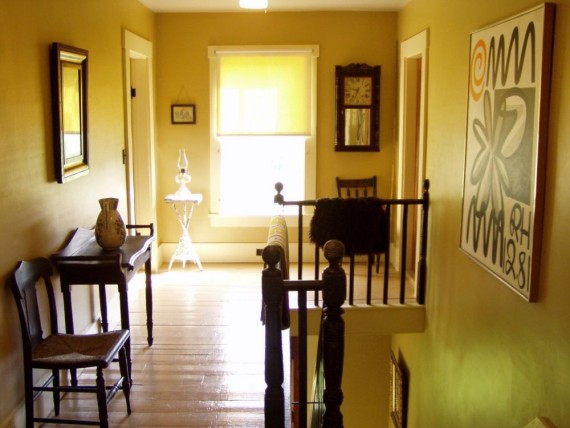
Boxes
October 25, 2011
We are pleased to announce the addition of a new line of gift boxes to our The Tradition of the New collection. Our inspiration for the surface decoration comes from many sources including; folk art quilts, early American floor stencils and the striking geometric stone floors of French Gothic Cathedrals. To decorate the boxes with these patterns, we put a contemporary twist on an early American technique.
Finely ground metallic powders are gently pounced or rubbed with a felt cloth or velvet pad through hand-cut paper stencils lightly applied to a painted surface coated with varnish dried 'til tacky. The stencils are removed and once thoroughly dry another coat of varnish is applied to set the powder permanently. This was a common form of adornment in the 19th century on furniture, tin boxes and the like.
Janet Waring, in her 1968 book, Early American Stencils on Walls and Furniture explains, "To understand the development of the technique of stenciling with bronze powders as we find it in America during the opening decades of the nineteenth century, we must follow the efforts of artisans in the old world to satisfy Europe's earlier taste for the polished surfaces and gold decoration of Oriental lacquer. Although the influence of Chinese art on the countries of Western Europe reaches far back into time, it was not until after the discovery of the eastern sea routes with the subsequent establishment of a flourishing trade by the English and Dutch East India Companies that lacquer became a dominant fashion."
We first learned of the technique some twelve years ago when restoring a charming antique Connecticut wood-works clock (circa 1835) that I spied in a dusty box in the basement of an antique shop on the North Fork of Long Island. The clock was largely intact, but its condition suggested it was in imminent need of rescue. Lovely stenciled columns had survived as well as the baroquely handpainted dial, but the stenciled 'splat' on top was missing.
Research was done to recreate the splat, as well as the pediments on each side that held it. Stencils were carefully cut, based on original samples we found in books and the craft of bronze or metallic powder stenciling was mastered. That clock now proudly hangs, fully restored, in our upstairs hallway.
When brainstorming designs for decorative boxes this old technique came to mind. You never see it used anymore - except in restoration. Today these metallic powders come in a plethora of colors. So, we experimented with color samples, created stencils, built dovetailed pine boxes, painted them and then pounced their surfaces with metallic powders to create a luminescent finish.
The creative process extends to the stenciling. For example, the Sweetgrass box is made with just one stencil with all or just a part of the stencil employed for each side. It actually helps to move quickly, eyeing things up, turning the stencil around, weighing the space and trusting your first impression. It adds a kind of freshness to the final product and assures that each hand made piece will be truly one of a kind.
(click photo to view larger image)
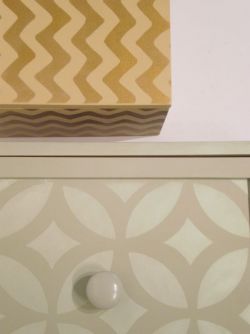
|
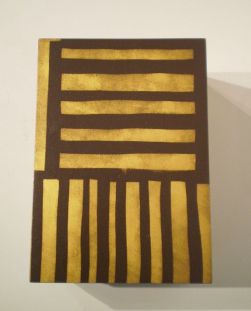
|
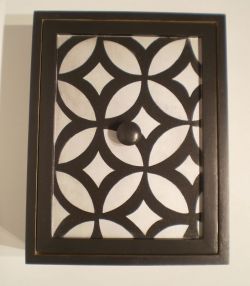
|
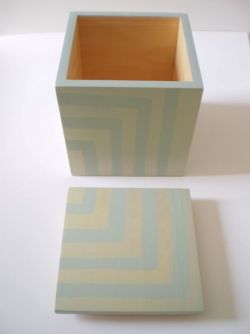
|
(comments = 1)
great idea to use the antique paint technique. boxes are very handsome and beautifully made.
leave a comment

fineartistmade blog
A journal about home design, gardening, art & all things Maine. Read more...
- December 2022
- November 2022
- October 2022
- November 2021
- May 2020
- October 2019
- August 2019
- July 2019
- September 2018
- April 2018
- December 2017
- August 2017
- June 2017
- May 2017
- December 2016
- August 2016
- July 2016
- April 2016
- November 2015
- June 2015
- May 2015
- March 2015
- October 2014
- March 2014
- February 2014
- January 2014
- December 2013
- November 2013
- July 2013
- May 2013
- April 2013
- March 2013
- January 2013
- December 2012
- November 2012
- August 2012
- June 2012
- April 2012
- March 2012
- February 2012
- January 2012
- December 2011
- October 2011
- August 2011
- July 2011
- June 2011
- May 2011
- April 2011
- March 2011
- February 2011
- January 2011
- December 2010
- November 2010
- October 2010
- September 2010
- August 2010
- July 2010
- June 2010
- May 2010
- My Scandinavian Home
- Daytonian in Manhattan
- {frolic!}
- I Married An Irish Farmer
- Smitten Kitchen
- The Curated House
- even*cleveland
- Mary Swenson | a scrapbook
- Ill Seen, Ill Said
- Gross & Daley Photography
- Remodelista
- Abby Goes Design Scouting
- Mint
- the marion house book
- 3191 Miles Apart
- Svatava
- Katy Elliott
- Poppytalk
- Kiosk
- decor8
- KBCULTURE
- Lari Washburn

